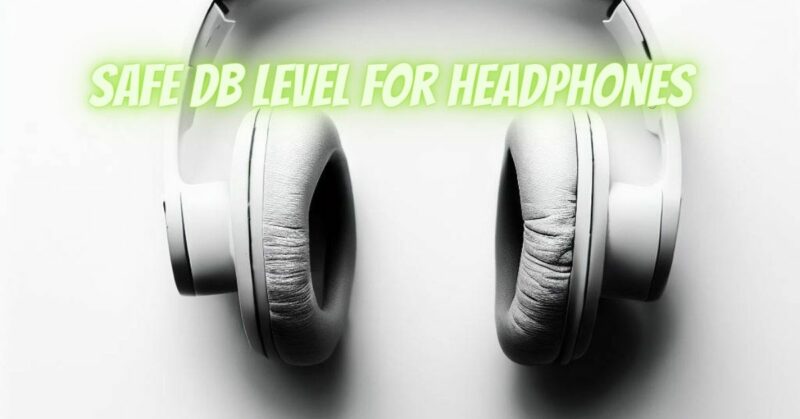Headphones have become an integral part of our daily lives, allowing us to enjoy music, podcasts, and other audio content on the go. However, it’s crucial to consider the volume levels to protect our hearing health. Understanding the safe dB level for headphones is essential for enjoying music without risking potential hearing damage. In this article, we will explore the recommended safe dB level for headphone usage, ensuring a pleasurable and responsible audio experience.
Understanding Decibels (dB):
Decibels (dB) are used to measure sound intensity or loudness. The dB scale is logarithmic, meaning that small changes in dB levels represent significant differences in sound intensity. For example, 85 dB is ten times louder than 75 dB.
Safe dB Level for Headphones:
The World Health Organization (WHO) and hearing health organizations recommend keeping the volume level below 85 dB for headphone usage. Sound levels above 85 dB can lead to hearing damage, especially with prolonged exposure. Listening to music or other audio content at or below this level is considered safe for most individuals.
The 60/60 Rule:
To further promote safe listening habits, consider following the 60/60 rule when using headphones:
- Volume Limit: Keep the volume at 60% of the maximum level on your device. Many modern audio devices have built-in volume-limiting features to help you adhere to this guideline.
- Listening Time: Limit your listening sessions to a maximum of 60 minutes at a time. Taking listening breaks allows your ears to rest and recover from sound exposure.
Potential Hearing Damage:
Prolonged exposure to high dB levels through headphones can cause noise-induced hearing loss (NIHL), a permanent condition that cannot be reversed. NIHL typically develops gradually over time and is often preventable with proper hearing protection and safe listening habits. Some signs of potential hearing damage include:
- Muffled or distorted sound perception.
- Difficulty understanding speech, especially in noisy environments.
- Ringing or buzzing sounds in the ears (tinnitus).
Protecting Your Hearing:
To protect your hearing and prevent noise-induced hearing loss, follow these guidelines:
- Use Volume Limiting Features: Many audio devices offer volume-limiting features to prevent exceeding safe dB levels. Enable this feature to protect your ears.
- Follow the 60/60 Rule: Keep the volume at 60% of the maximum level and listen for no more than 60 minutes at a time.
- Take Listening Breaks: Give your ears a rest by taking regular breaks from listening to music, especially during prolonged listening sessions.
- Choose Safe Listening Devices: Opt for headphones or earbuds that have built-in volume-limiting features or are specifically designed for safe listening.
Understanding the safe dB level for headphones is crucial for protecting your hearing health. Keep the volume below 85 dB, adhere to the 60/60 rule, and take listening breaks to allow your ears to rest. By adopting safe listening habits and being mindful of the volume levels, you can continue to enjoy the beauty of music and audio content without compromising your precious sense of hearing. Remember, responsible listening habits today will ensure you can revel in the joys of sound for many years to come.

